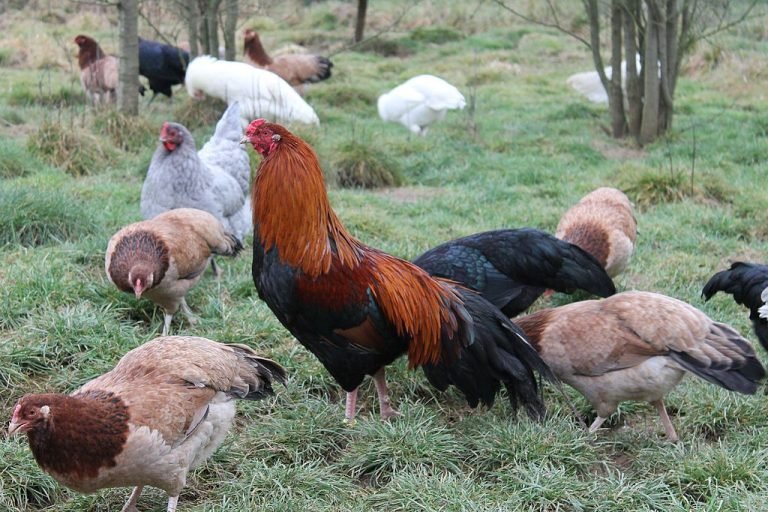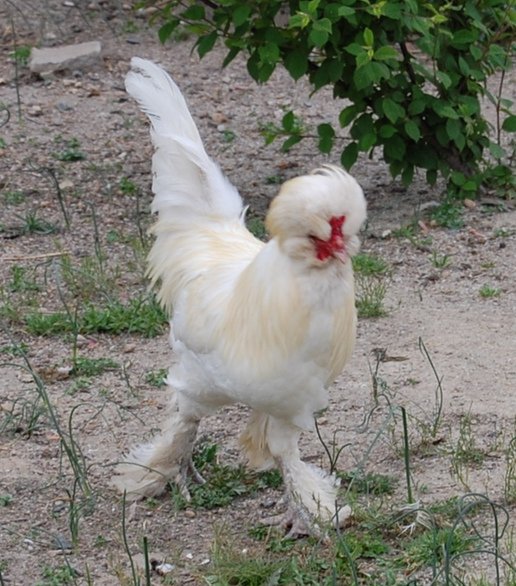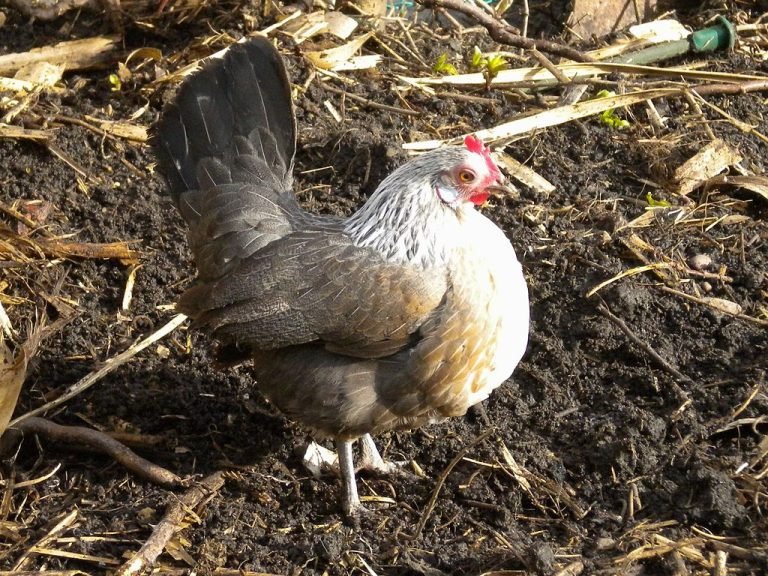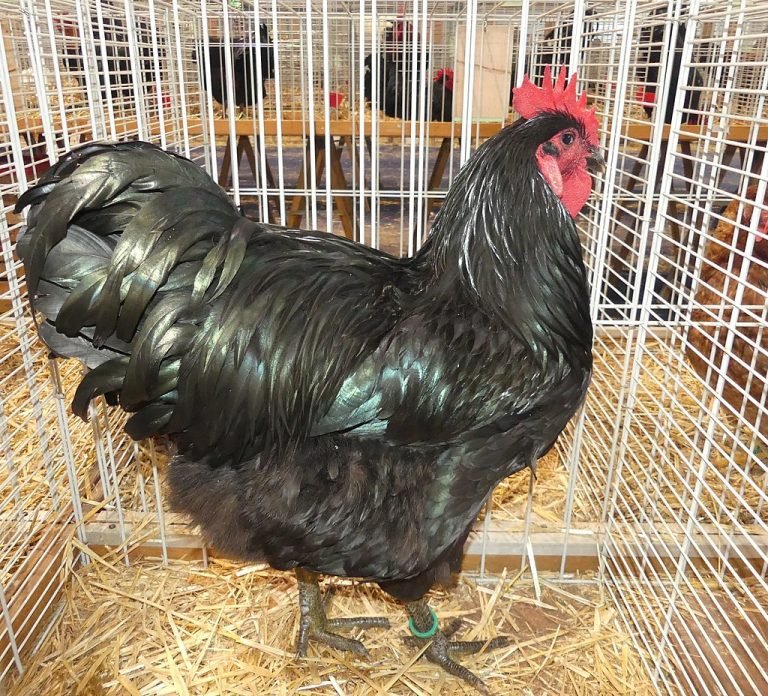The Lakenvelder chicken breed is known for its distinct black-and-white striped plumage. It is a small to medium-sized breed with an active and lively temperament, and it is prized for its attractive appearance and utility as a dual-purpose bird.
With their striking markings and friendly disposition, Lakenvelder chickens make great additions to backyard flocks, and they are also popular among exhibition enthusiasts.
History
The Lakenvelder chicken breed has a fascinating history dating back to the early 19th century in the Netherlands. This breed was named after the town of Lakenveld, known for its dairy cattle, where it was first developed. The breed was created by crossing local indigenous fowl with various Old English breed imports, resulting in a distinctive and stunning appearance.
Let’s explore the history of the Lakenvelder chicken breed further through a series of bullet points:
- Lakenvelder chickens were initially bred as dual-purpose birds, appreciated for their excellent egg-laying capabilities and meat quality.
- They gained popularity quickly, and soon after their introduction, they became a symbol of prestige among Dutch poultry enthusiasts.
- The striking appearance of Lakenvelder chickens, with their black and white plumage divided into neat, symmetrical stripes, led to their being known as “spangled” fowl.
- During the late 19th and early 20th centuries, the breed faced some challenges as it almost went extinct due to crossbreeding and the rise of industrial poultry farming.
- However, dedicated breeders managed to preserve the Lakenvelder breed by establishing breeding programs focused on maintaining its unique characteristics.
- In the 1920s, the breed was reintroduced to England, where it gained popularity among poultry keepers who appreciated its elegant appearance and good egg production.
- Lakenvelder chickens were later introduced to North America, where they became highly regarded for their attractive appearance and their ability to adapt well to various climates and conditions.
Today, the Lakenvelder chicken breed continues to captivate poultry enthusiasts worldwide with its historic significance, striking appearance, and versatile attributes. Whether you’re interested in showing, breeding, or simply enjoying the presence of these beautiful birds in your backyard, the Lakenvelder breed offers a unique and rewarding experience.
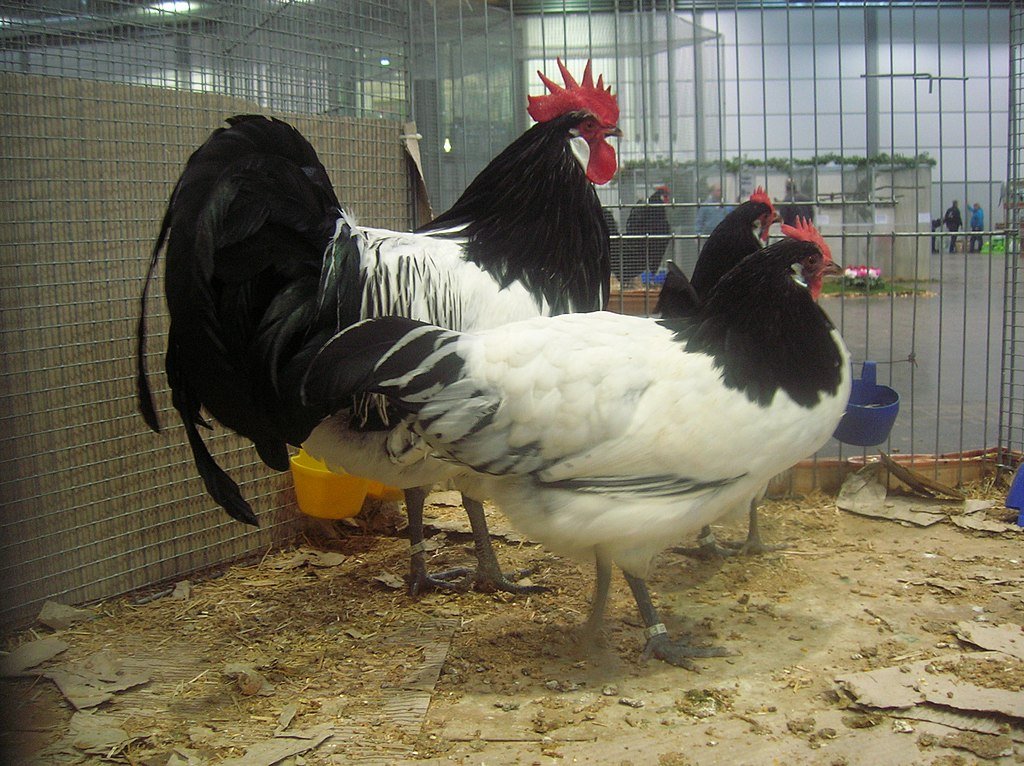
General Characteristics
The Lakenvelder chicken breed is known for its unique and striking appearance, with its black and white striped plumage. These chickens are generally active and hardy, making them a popular choice for backyard flocks.
Lakenvelder chickens are a unique and fascinating breed known for their distinct appearance and charming personality. In this section, we will explore the general characteristics of Lakenvelders, highlighting their distinctive features, temperament, and egg-laying abilities.
Appearance
- Lakenvelders are small to medium-sized chickens with an upright and elegant posture.
- They have a striking black and white plumage pattern that resembles a well-tailored suit.
- The breed’s name, “Lakenvelder,” is derived from the Dutch words “laken,” meaning sheet or tablecloth, and “velder,” meaning field, referring to their feather pattern.
- Their feathers are predominantly white, with evenly spaced black stripes that create a visually captivating effect.
Temperament
- Lakenvelders are known for their friendly and docile nature, making them ideal for backyard or family flocks.
- They are generally calm and adaptable, making them a great choice for novice chicken keepers.
- Although not flighty, they can be active foragers, so providing them with plenty of space to roam and explore is essential.
Egg Production
- Despite their small size, Lakenvelders are consistent layers of small to medium-sized white eggs.
- They exhibit good egg-laying characteristics, laying approximately three to four eggs per week.
- Lakenvelder hens are known for their persistence and reliability, making them valued contributors to any flock.
Longevity
- With proper care and suitable living conditions, Lakenvelders can live for up to six to eight years.
- Their hardiness enables them to adapt well to various climates, making them suitable for both cold and hot regions.
- Regular health check-ups and a balanced diet will contribute to their overall well-being and lifespan.
Considerations
- Due to their rarity, Lakenvelders may be slightly more challenging to find compared to other chicken breeds.
- It is crucial to source Lakenvelders from reputable breeders or hatcheries to ensure the breed’s integrity and health.
- Providing these chickens with ample space and a secure enclosure will help them thrive and express their natural behaviors.
Lakenvelder chickens are a stunning and friendly breed that adds a touch of elegance to any backyard flock. With their striking appearance, gentle temperament, and reliable egg-laying abilities, they continue to capture the hearts of chicken enthusiasts worldwide. Whether you are a novice or experienced chicken keeper, considering Lakenvelders as part of your flock is sure to bring joy and beauty to your feathered family.
Temperament
The temperament of Lakenvelder chickens is known for their calm and friendly nature, making them ideal for backyard flocks. With their gentle demeanor, they are easy to handle and interact with, making them a popular choice for both beginner and experienced chicken keepers.
Lakenvelder Chicken Breed:
Lakenvelder chickens are known for their distinct temperament, which sets them apart from other chicken breeds. With their lively and curious nature, these chickens can be a delightful addition to any backyard flock. Let’s take a closer look at the temperament of Lakenvelder chickens:
Active And Energetic
- Lakenvelders are highly active birds, constantly on the move and exploring their surroundings.
- They enjoy foraging and scratching the ground in search of insects, seeds, and other tasty treats.
- Their energetic nature makes them excellent free-range chickens that thrive in spacious environments.
Friendly And Docile
- Lakenvelders have a generally friendly disposition and are known for being calm and docile.
- They can be easily tamed and are often approachable, making them suitable for families with children.
- With proper handling and socialization, these chickens can become quite tame and even enjoy human interaction.
Independent
- While Lakenvelders are friendly, they also have a streak of independence.
- They are relatively self-sufficient and do well in situations where they have the freedom to explore and roam.
- This independence can be an advantage for those looking for low-maintenance chickens.
Alert And Vocal
- Lakenvelders are attentive and alert, always on the lookout for potential dangers.
- They have a strong sense of awareness, and their vocal nature makes them effective alarm birds.
- If they sense something unusual or perceive a threat, they will not hesitate to sound the alarm to protect their flock.
Pecking Order
- Like many chicken breeds, Lakenvelders follow a pecking order within their flock.
- This hierarchy helps maintain order and defines social dynamics among the chickens.
- It’s important to introduce new Lakenvelders gradually to minimize conflicts and establish a harmonious balance.
Lakenvelder chickens possess a unique blend of active energy, friendliness, independence, alertness, and adherence to the pecking order. With their engaging temperament, they make a wonderful choice for both novice and experienced chicken enthusiasts.
Comb Types
Lakenvelder chickens are a unique breed known for their striking appearance and utility. One of the characteristics that distinguishes them from other chicken breeds is their distinct comb type. The comb, situated on top of their heads, serves several important purposes such as regulating body temperature, attracting mates, and enhancing overall aesthetic appeal.
Let’s explore the different comb types found in Lakenvelder chickens:
Single Comb
- The most common comb type in Lakenvelders is the single comb.
- It is a medium-sized comb with a row of evenly spaced serrations resembling a saw blade.
- The single comb allows for better heat dissipation, which is especially advantageous in warmer climates.
- This type of comb is susceptible to frostbite in extreme cold, so proper protection should be provided during chilly winters.
Rose Comb
- Another comb type found in Lakenvelders is the rose comb.
- The rose comb is characterized by a compact, cushion-like structure with a smooth surface.
- This type of comb is well-suited for colder climates as it offers better protection against frostbite.
- It also reduces the risk of being injured or pecked by other chickens due to its low profile.
Pea Comb
- The pea comb is a unique comb type found in some Lakenvelders.
- With three distinct sections, the pea comb resembles a row of connected peas.
- This comb type is generally more resistant to frostbite than the single comb, but less protective than the rose comb.
- The pea comb adds a touch of charm to the overall appearance of Lakenvelder chickens.
V-Shaped Comb
- The V-shaped comb is relatively rare in Lakenvelders but occasionally occurs.
- This comb type is characterized by two parallel rows of serrations forming a V shape when viewed from above.
- While less common, the V-shaped comb still performs the essential functions of a comb, such as regulating temperature and attracting mates.
Buttercup Comb
- The buttercup comb is another distinctive comb type occasionally found in Lakenvelders.
- It forms a cushion-like structure with a small, circular indentation in the center, resembling a buttercup flower.
- This comb type is relatively smaller and less exposed, offering some protection against frostbite.
Lakenvelder chickens exhibit a variety of comb types, each with its own distinct characteristics and advantages. Whether it’s the single comb for optimal heat dissipation, the rose comb for cold weather protection, or the pea comb for a unique appearance, these combs contribute to the overall beauty and functionality of the Lakenvelder breed.
Conclusion
To sum it up, the Lakenvelder chicken breed offers a truly unique and visually striking addition to any backyard or farm. With their beautiful black and white plumage, they are not only a pleasure to look at but also serve as efficient egg layers.
These chickens are known for their resilient nature, adaptability to various climates, and ability to forage and find their own food. Their temperament and calm nature make them excellent pets and companions for both children and adults. Whether you are a beginner or an experienced chicken owner, the Lakenvelder breed is an ideal choice, as they are relatively easy to care for and require minimal maintenance.
So, if you are looking to add beauty, productivity, and entertainment to your flock, consider adding a Lakenvelder to your chicken family and experience the joy they bring.

